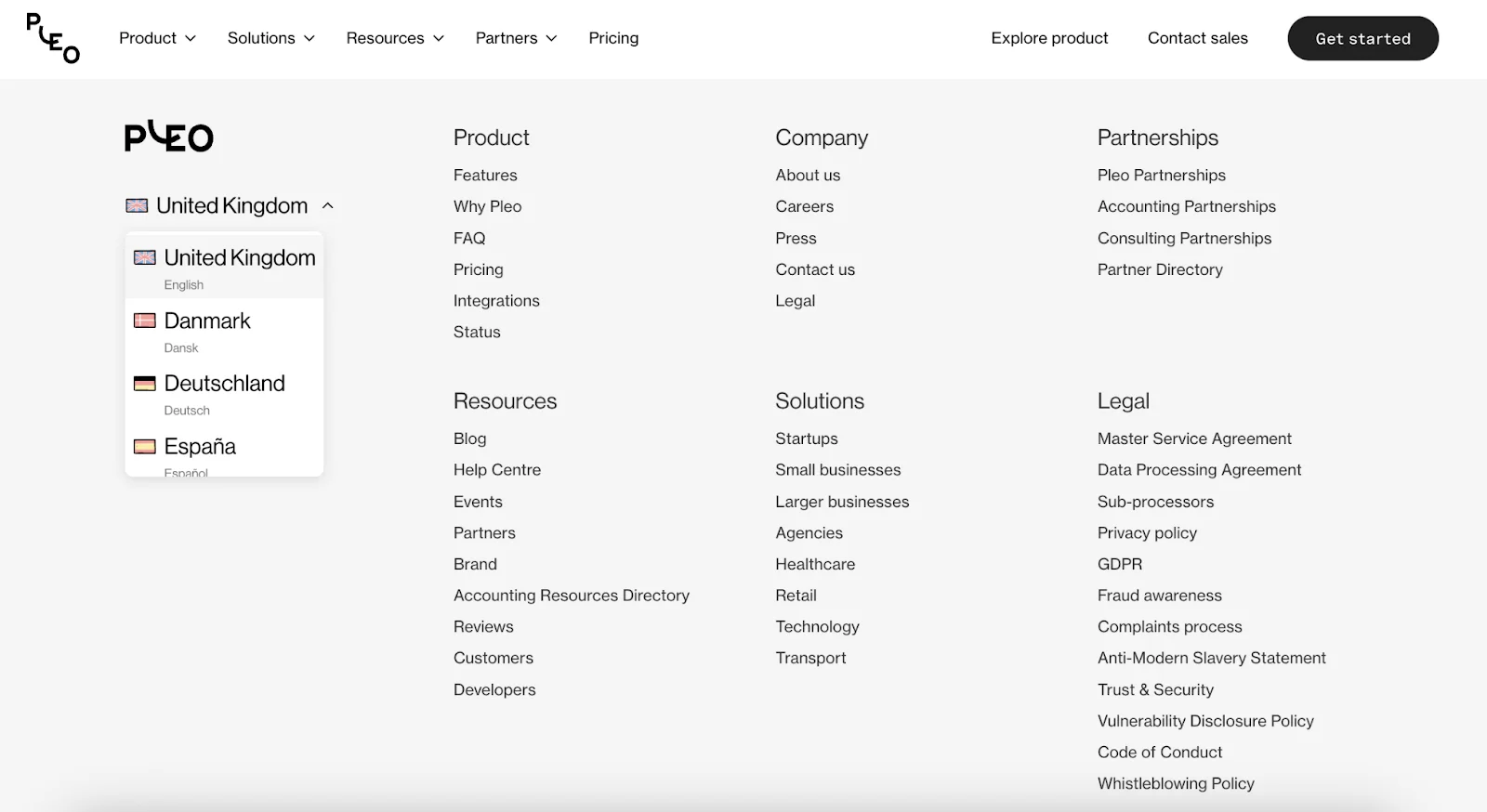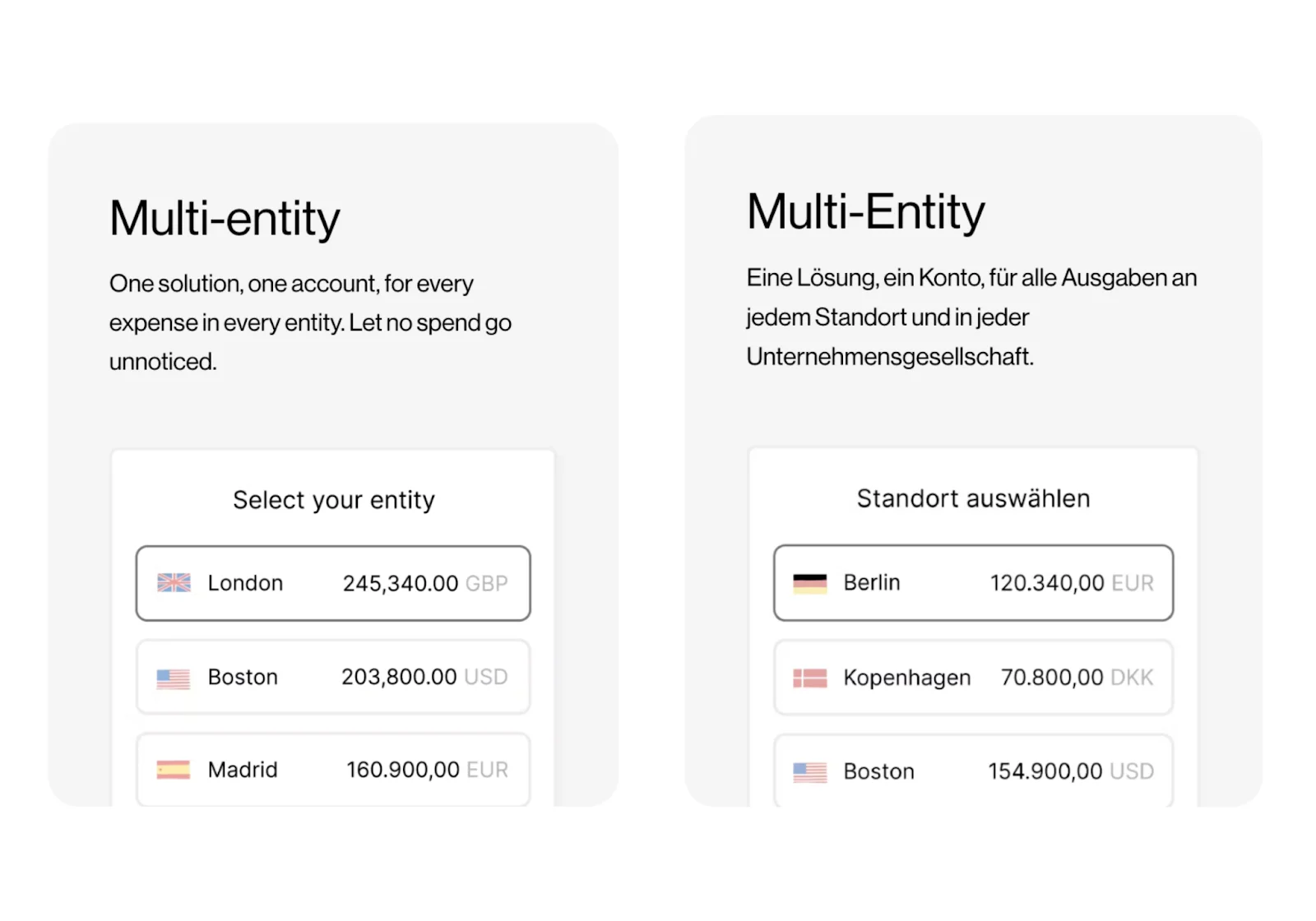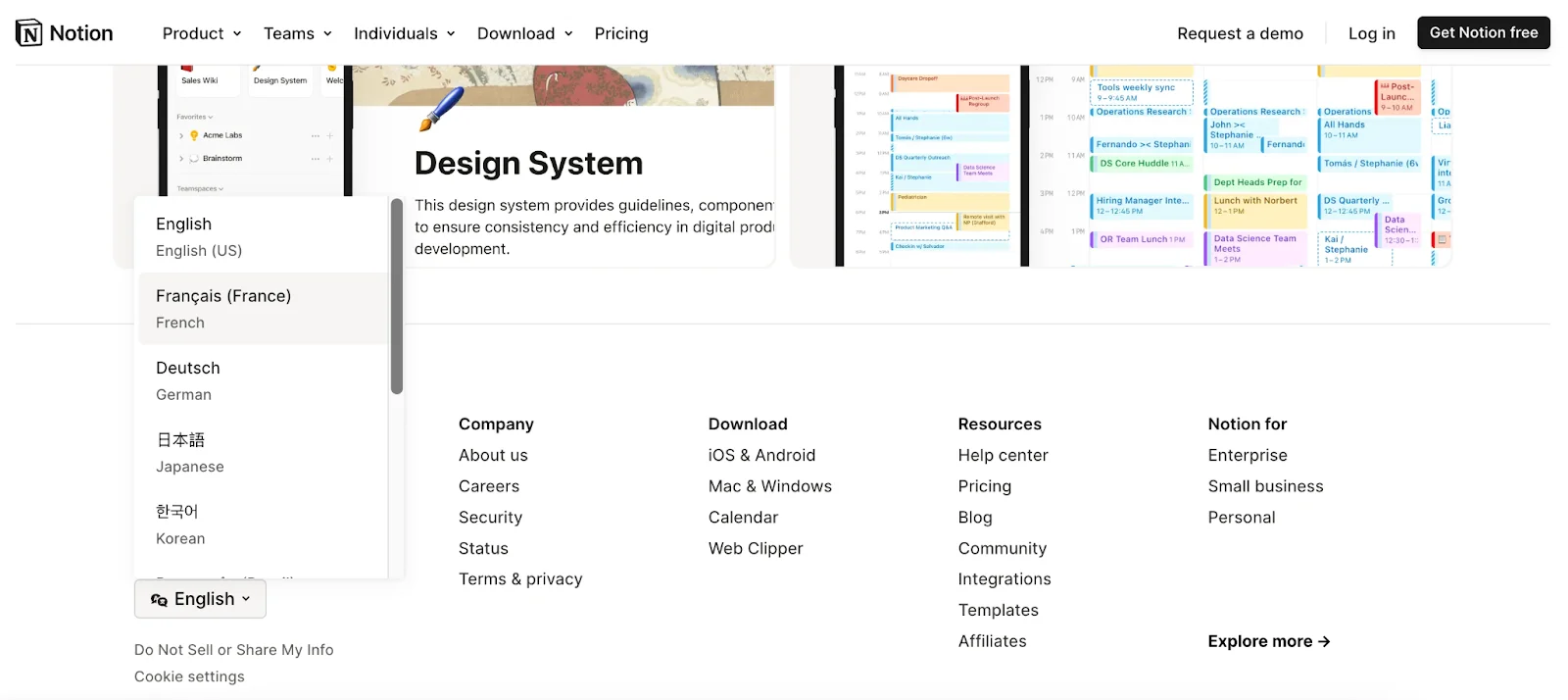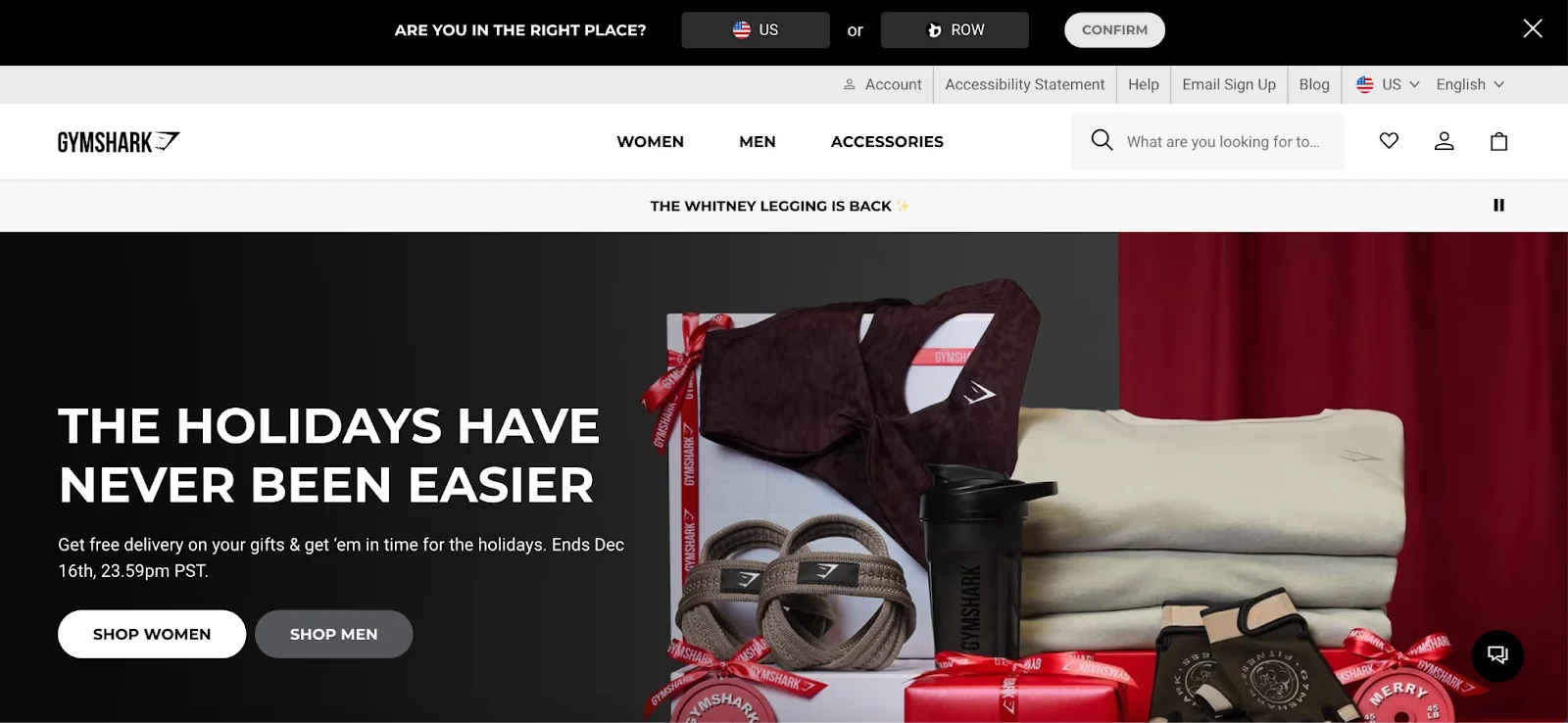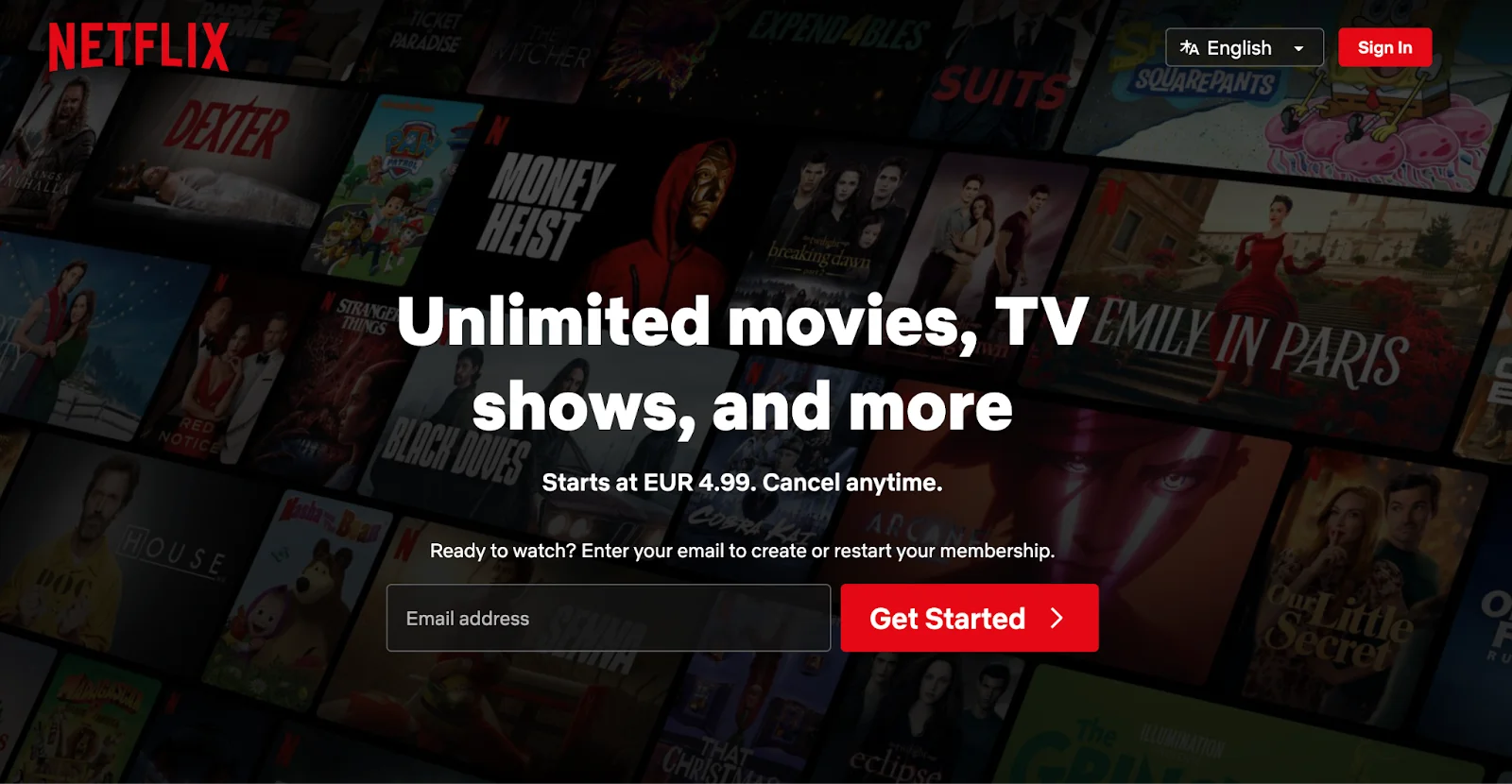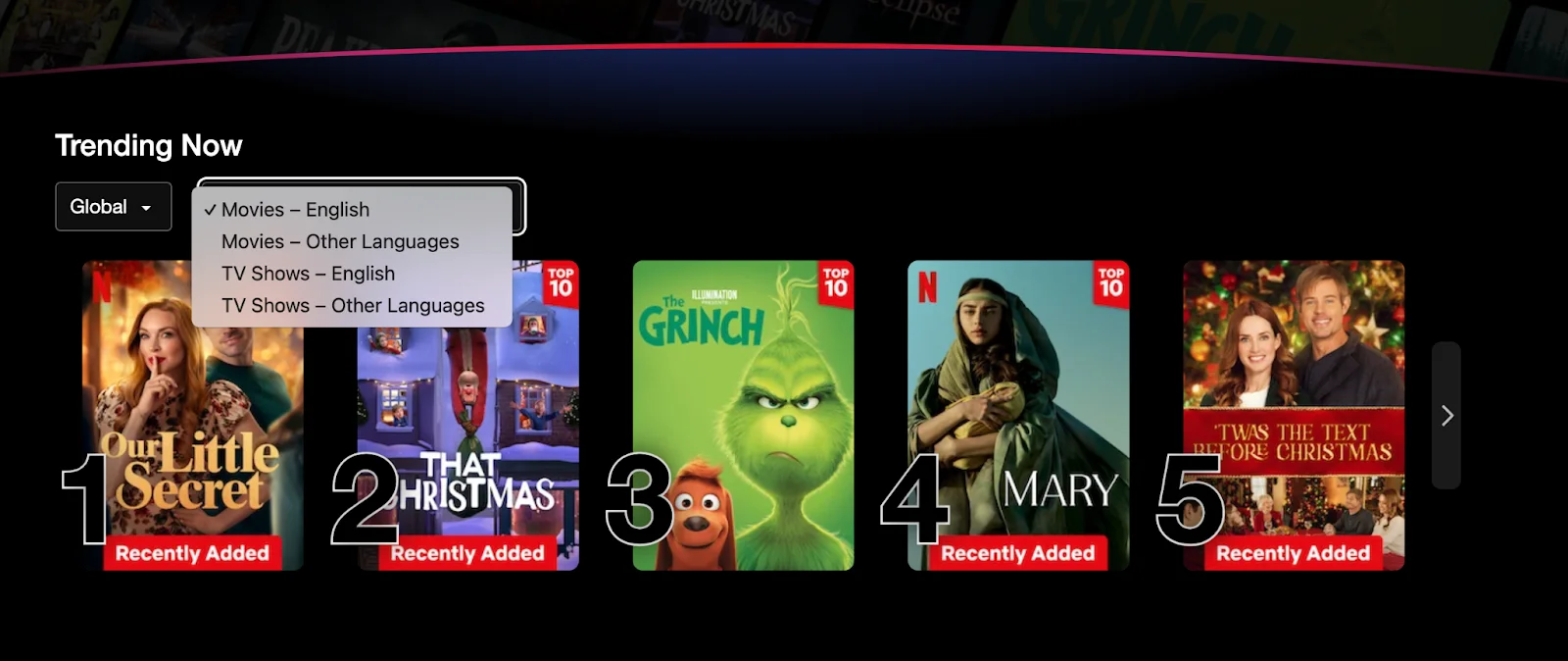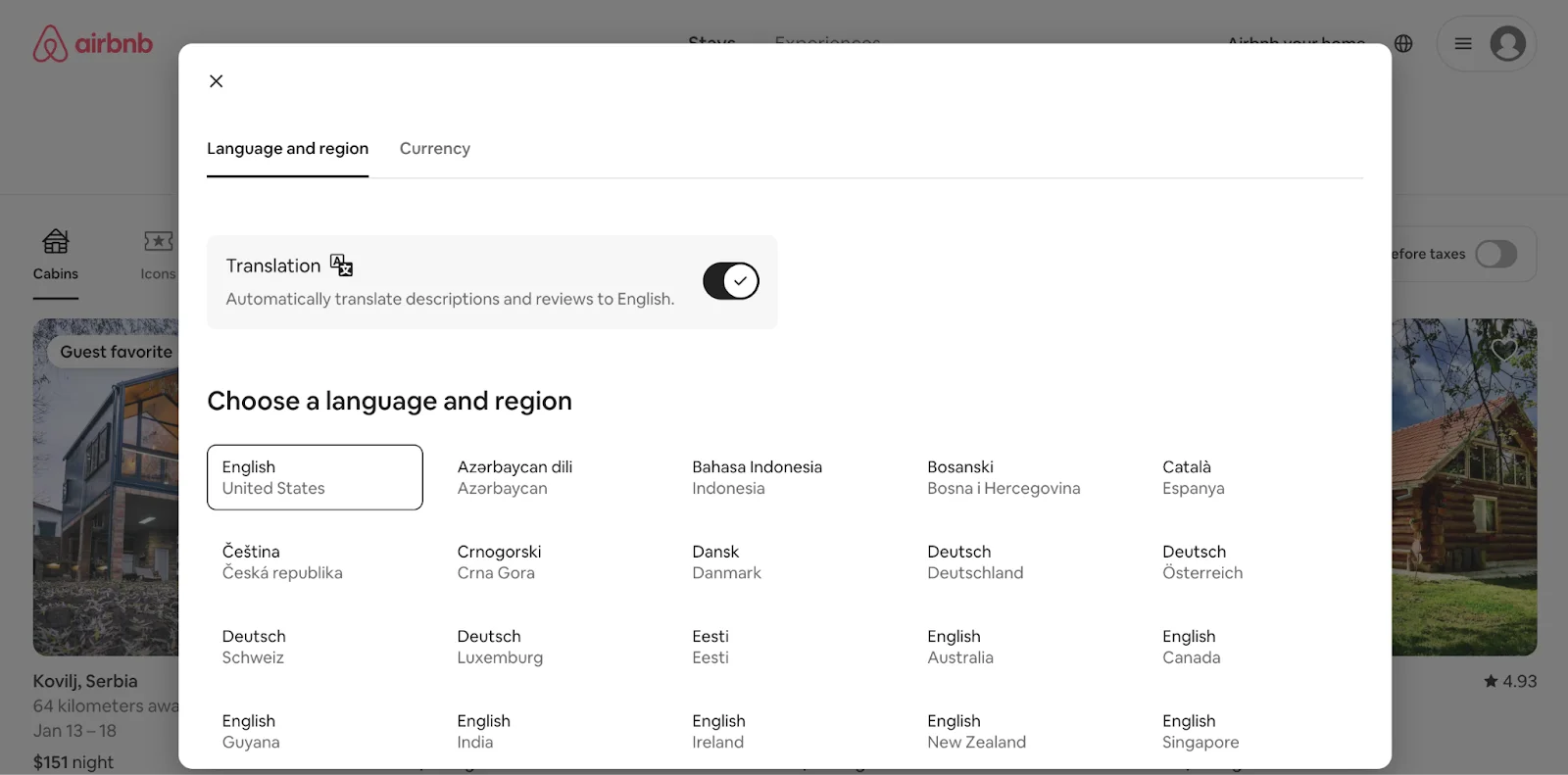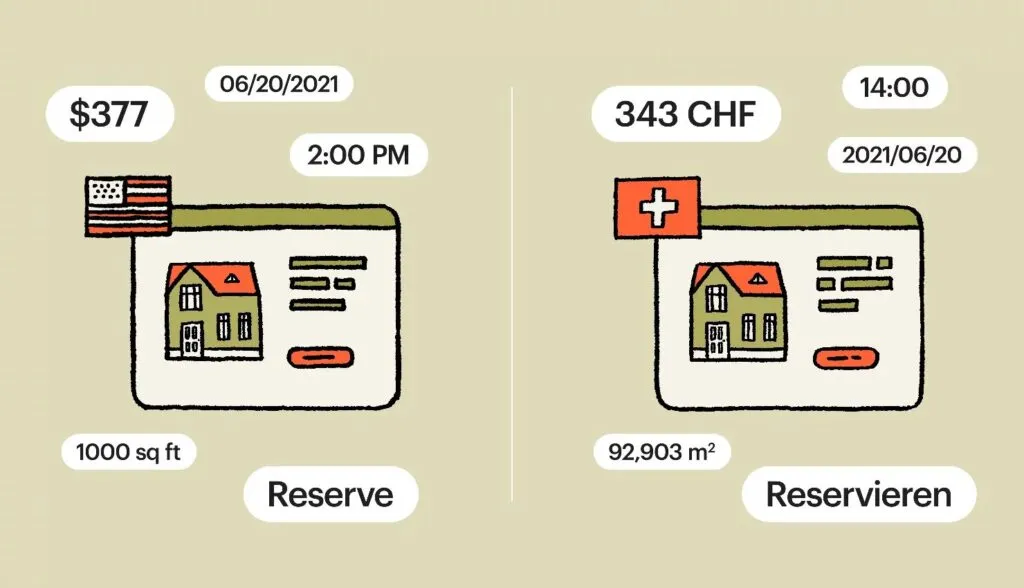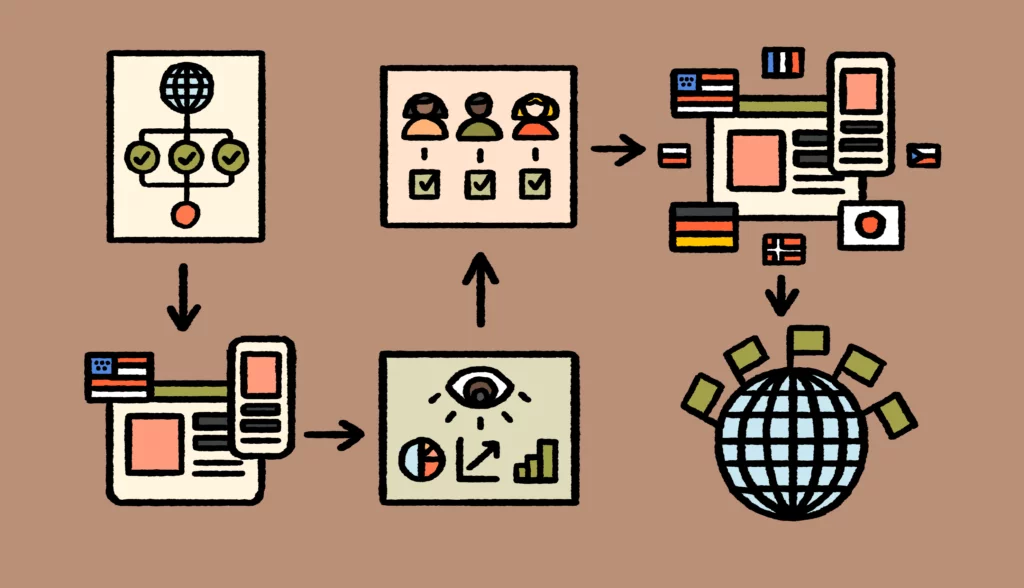Creating multilingual websites is one of the best ways to connect with audiences around the world. But it’s not just about adding a language switcher or running text through a translator; effective website localization ensures that your content is culturally relevant, accurate, and user-friendly across all markets.
The most successful multilingual websites feel effortless to navigate, no matter the language, because they prioritize user experience and localization.
If you’re looking for inspiration or practical ideas, this list of five exceptional multilingual websites should do the trick. Let’s take a closer look at what makes them stand out.
💡 Examples and actionable insights
We took some time to analyze five different multilingual websites and gather localization lessons for you. The selection is diverse enough to inspire your next move. Each example is an opportunity to learn something new and discover a smart way to engage an international audience.
1. Pleo.io: example of a fintech multilingual website
Pleo is a spend management solution that helps businesses simplify expense reporting. It enables companies to manage spending in a smart and efficient way. With features like virtual company cards, real-time expense tracking, and automated bookkeeping, Pleo targets businesses of all sizes across multiple countries.
What makes Pleo.io a great example
At the moment, Pleo’s website is available in 18 languages, including English, German, Danish, Spanish, French, and Dutch, catering to their growing international customer base.
Here’s what we love about it:
- The language selector is easily accessible, so that users can find their preferred language without hassle
- Pleo invests in localization to make sure all content (including visuals) suits the cultural and business norms of each market
- While the content is localized, Pleo maintains a consistent brand voice and design across all markets
Here’s an example of one section on Pleo’s home page displayed in English (UK) and in German.
As you can see, not only does Pleo translate their copy, but they also localize their visuals (e.g., capital city, currency), making sure the content fully resonates with the target audience.
📚 Further reading: Learn more about the way Pleo handles localization and how Lokalise helps them create relevant experiences for users all over the globe.
2. Notion: example of a SaaS multilingual website
Notion is an all-in-one productivity tool that helps individuals and teams manage notes, tasks, projects, and workflows. The app’s modular design allows users to create highly personalized workspaces, making it a favorite for professionals, students, and businesses worldwide.
What makes Notion a great example
With its growing global user base, Notion has prioritized a multilingual website to make sure customers speaking the most prevalent languages have proper access to their content.
Here’s what we love about it:
- Notion ensures its site, product, and support documentation are translated and adjusted cohesively (every touchpoint feels relevant and integrated)
- They maintain a cohesive design and tone across all 10 languages, ensuring it resonates with an international audience
- It’s easy for users to find their preferred language within the footer
Here’s what Notion’s Katsukiyo Nishi, General Manager APAC, had to say about the company’s commitment to being multilingual:
“As we get to know more people around the world, it’s clear how core language is to making a tool, and a space, feel like home. We want Notion to feel like it was built in every country where people use it.”
🧠 Did you know?
Using any tool (Notion included) in your preferred language can boost your productivity by eliminating the mental effort of translating tasks and notes. It lets you focus entirely on your work. This is why multilingual support is extremely important, especially in SaaS.
3. Gymshark: example of a fitness brand multilingual website
Gymshark is one of the leading fitness apparel and accessories brand, known for its stylish and functional workout gear. Founded in the UK, it has rapidly grown into a global sensation, mostly thanks to its loyal community of fitness enthusiasts and influencers.
What makes Gymshark a great example
Gymshark’s multilingual website plays a vital role in delivering its brand message and creating a seamless shopping experience for customers worldwide. Available in 18 languages, it aims to localize the experience for users the moment they land on the home page.
- If the website is not available in your native language, you get prompted to select ROW (rest of the world)
- The top banner doesn’t only help with creating a relevant experience for users, but it also makes the e-commerce logistics easier (e.g., shipping info, currency displayed)
- Browse Gymshark’s web pages, and you’ll see how the product mix and imagery are adjusted to suit different markets (from sizing available to the diversity of models)
💡 Pro tip
Creating a multilingual website is just the first step. Gymshark’s localization strategy includes tailoring product lines to specific regions, partnering with local influencers, and implementing marketing campaigns that align with the preferences of each target audience. This personalized approach has helped Gymshark achieve global brand recognition.
4. Netflix: example of a multilingual website of a streaming service
Netflix is a well known global streaming platform that offers a rich library of movies, TV shows, and award-winning original content. Available in over 190 countries, it combines technology with localized experiences. From subtitles and dubbing to other aspects of making the content feel region-specific, Netflix invests a lot into connecting with audiences worldwide.
What makes Netflix a great example
Netflix stands out as a great multilingual website because it prioritizes a seamless, localized user experience. It supports over 30 languages, with translated interfaces, subtitles, and dubbing to make content accessible worldwide.
Here’s what we love about it:
- Netflix uses advanced geolocation and browser language detection to recognize a visitor’s country and offer the website in their native tongue
- Even though Netflix auto-detects language preferences, users can manually change their preferences at any time in the setting
- You can browse most popular movies and TV shows in your country or worldwide, which makes the browsing experience highly relevant
Netflix also allows you to browse movies and TV shows based on your language preferences. The way they approached both translation and localization is truly praiseworthy.
5. AirBnb: example of a multilingual website for booking homestays
Airbnb is a well-known global platform that connects travelers with unique accommodations and experiences in over 190 countries. From cozy apartments to luxury villas, it offers options for every budget and preference.
What makes AirBnb a great example
Airbnb supports over 60 languages, automatically detecting users’ location and browser settings to display the assumed preferred language. It also allows manual settings for region selection for added personalization, helping improve its overall localization rate by tailoring the experience to individual user preferences.
Here’s why we love it:
- Users can choose to automatically translate descriptions and reviews to English with a simple toggle button
- They can set preferences for both languages and currency
- By default, prices are displayed in local currencies, and measurements (e.g., kilometers or miles) adapt to regional norms
When you explore AirBnb’s multilingual website, you’ll see the company invests a lot of effort into adapting its messaging, visuals, and recommendations to resonate with local cultures.
Still, AirBnb manages to maintain global consistency, which helped them create a recognizable brand, worldwide.
🧠 Did you know?
Translating into 12 widely spoken languages, such as Chinese, English, Hindi, Arabic, Spanish, Bengali, Portuguese, Russian, Urdu, French, Japanese, and German, can help you connect with a large majority of the global population, especially in key markets. Understanding how to translate a website into these languages effectively is essential for maximizing your global reach.
Launching multilingual websites: best practices
Launching in multiple languages feels overwhelming, but knowing where to start makes all the difference. Here’s a clear overview of best practices to help you out.
1. Domain strategy
Should you go with a domain structure like yoursite.com/gb or a country-specific domain like yoursite.co.uk? Each option has its pros and cons, from SEO impact to user trust. Take the time to choose the right setup for your goals.
2. Translation and localization
Don’t try to localize for every market all at once. Instead, prioritize key regions and languages. This approach helps you build your localization expertise and create a solid foundation to scale later.
3. Currencies and payment methods
It’s not just about swapping $ for €. Local pricing should feel natural. For instance, a US price of $99.95 converted directly might show as €94.61, which is an obvious giveaway that you’re not a local site. Adjust prices to round numbers and align with regional expectations.
4. Imagery and video
Cultural context matters. What feels relatable in one market might not in another. For example, diversity and inclusion in visuals are highly valued in the U.S. and Europe, but may carry different connotations in Japan or China.
5. Customer Support
Expanding internationally means supporting customers in their native language. Options like multilingual help centers, chatbots, and automation can ease the load, but consider how much personalized support you’ll need for new markets before committing resources.
6. International SEO
If you want to reach global markets, you need to invest in international SEO. Make your localized website easy to find by optimizing for international search engines. This includes doing keyword research in each language, implementing hreflang tags for language and region targeting, and ensuring your website’s structure supports multilingual content.
📚 Further reading
If you want a deeper dive, check out our guide to website localization in seven steps. Taking these steps thoughtfully will make sure your content resonates with an international audience.
The do’s and don’ts of multilingual websites
Done right, a multilingual website helps you connect with global audiences. Done wrong, it alienates users. In the table below, you can see actionable dos and don’ts to help you navigate website translation challenges.
Do’s for multilingual websites | Don’ts for multilingual websites |
Plan for text expansion Design for text expansion (e.g., English to German) and contraction (e.g., English to Swedish). Use flexible layouts to accommodate differences. | Don’t fix layouts Avoid rigid designs. Some languages, like Chinese, use vertical alignment, while others, like Arabic, are read right-to-left. Take that into account. |
Enable language switching Provide an easy-to-find language toggle and let users choose their preferred language. | Be careful with auto-selecting languages for users Location doesn’t equal language. For example, not all users in Sweden speak Swedish. |
Provide translator context Share goals, tone, and target audience to ensure accurate and culturally relevant translations. | Don’t assume translators know Without context, translations may miss the mark or lack cultural nuance. |
Use ISO codes for locale Include region-specific codes (e.g., zh-TW for Taiwanese Mandarin) for precise localization. | Don’t ignore local differences Treating languages like one-size-fits-all can alienate users. The best multilingual websites even honor the difference between EN (UK) and EN (US). |
Make sure to test everything Check usability for various languages, orientations, and devices. | Don’t rely solely on machine translation Automated translations often lack accuracy and cultural relevance. |
Ready to launch a multilingual website?
Going multilingual is about connecting with people in a way that feels natural and authentic. The best multilingual websites do this by blending cultural relevance with seamless design, supported by dynamic content localization. This is how every visitor feels at home while browsing.
We analyzed some great multilingual websites coming from the fintech and fitness industry, as well as SaaS, booking, and streaming. Feeling inspired?
If you’re ready to take your website global, Lokalise has your back. It’s built to make translation easy, collaborative, and tailored to your needs, helping you create a localized experience your audience will love.
Give Lokalise a try and see how simple it is to make your website speak everyone’s language.



